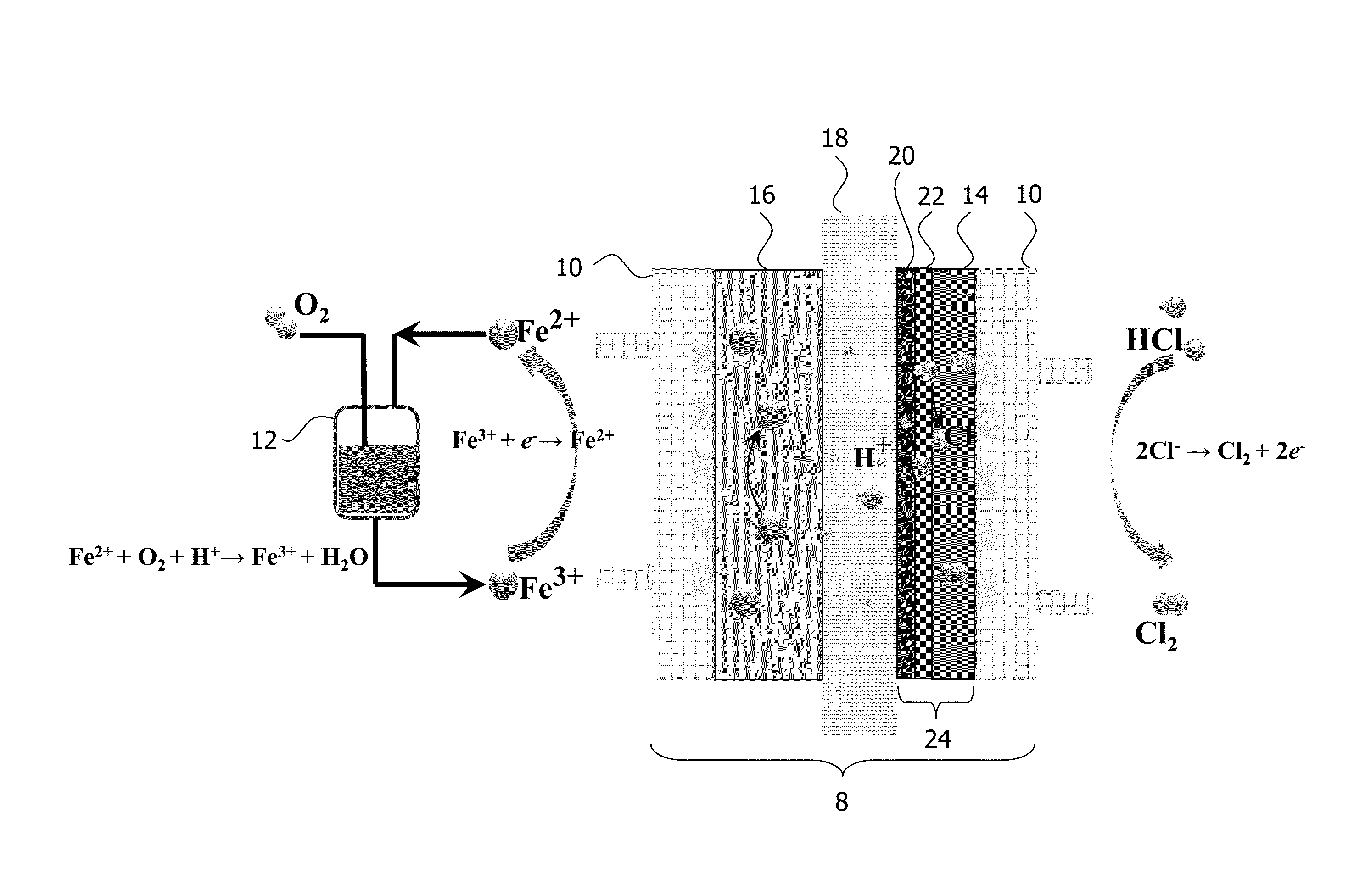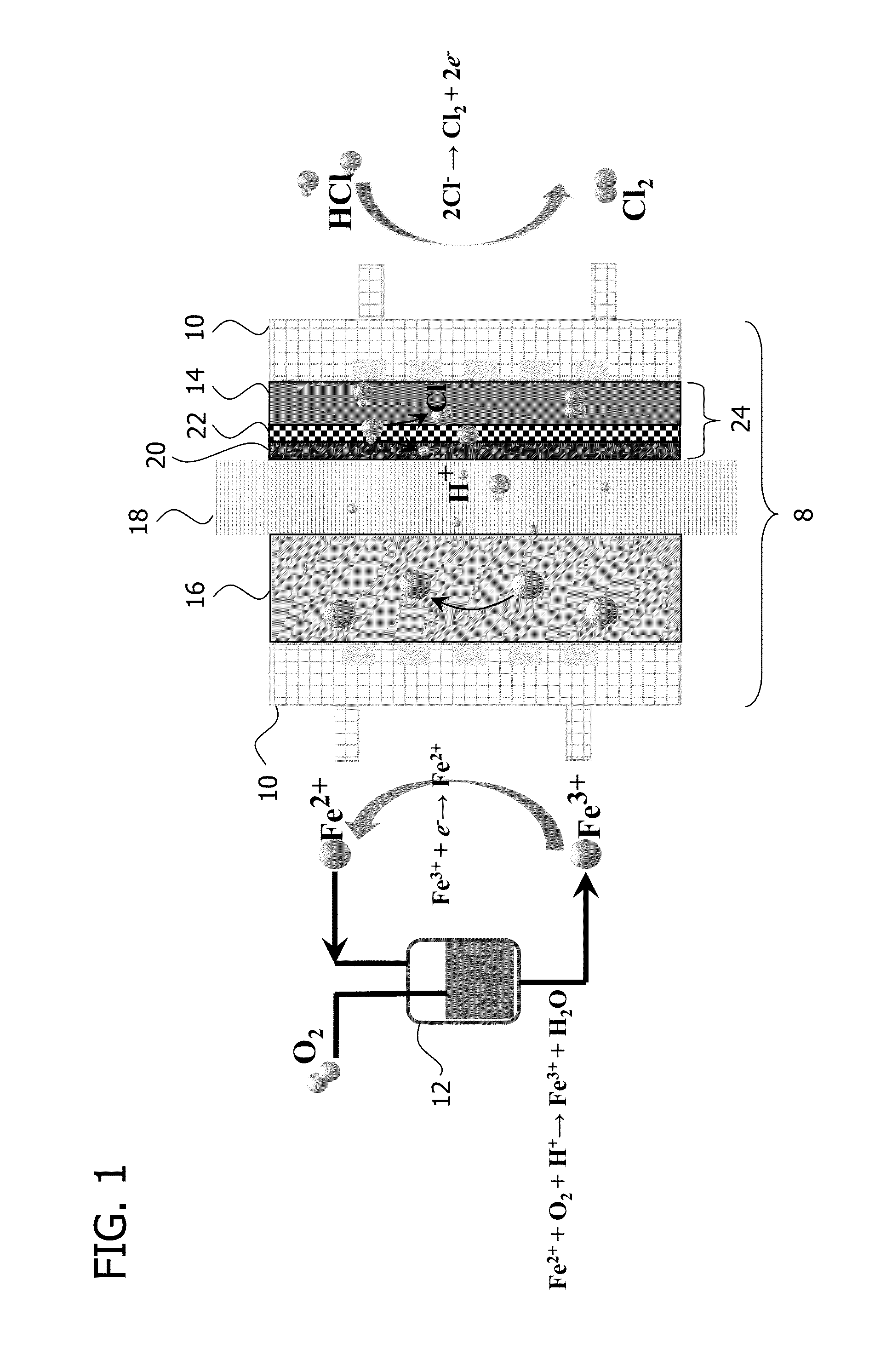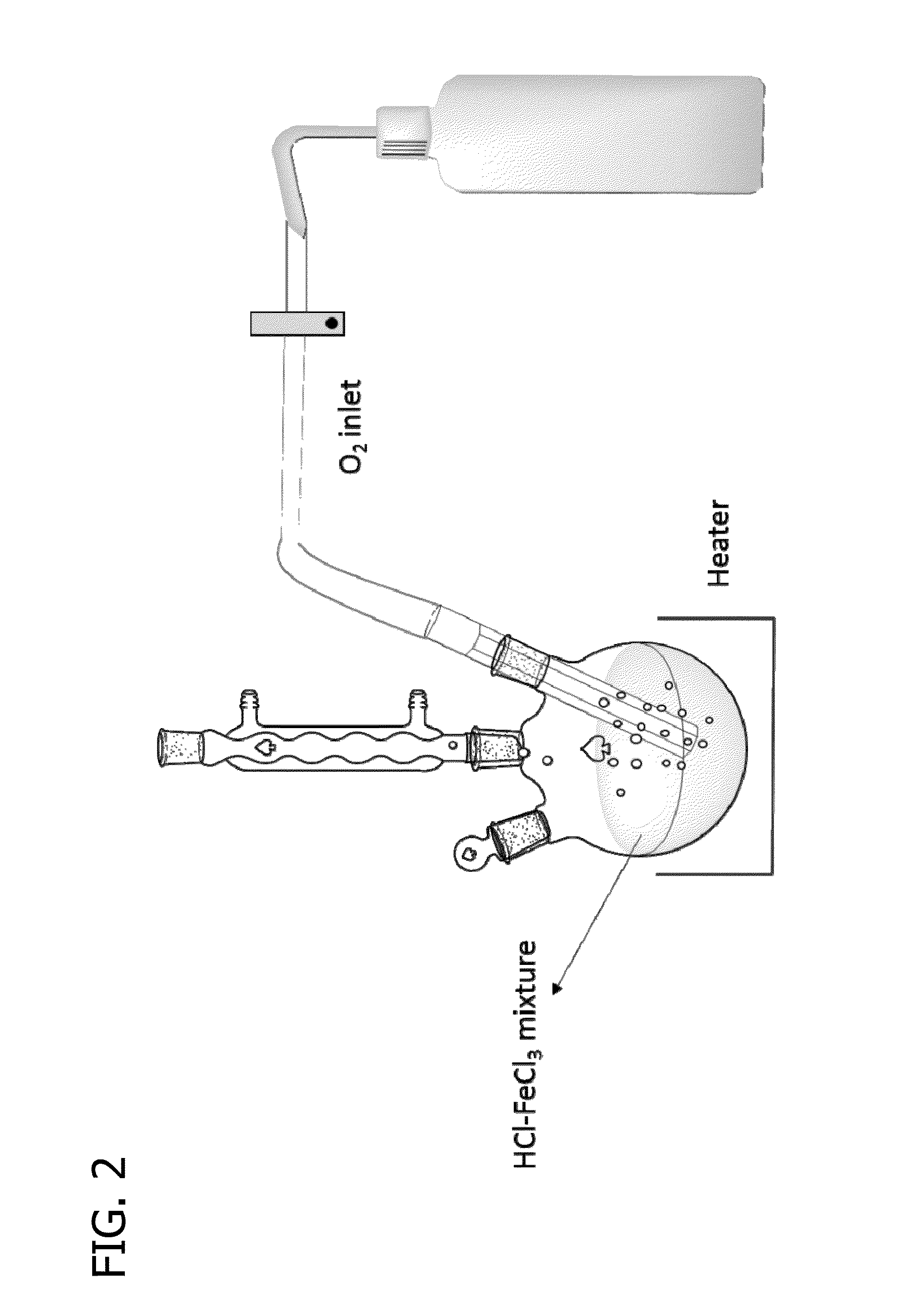Electrolysis device for chlorine production
- Summary
- Abstract
- Description
- Claims
- Application Information
AI Technical Summary
Benefits of technology
Problems solved by technology
Method used
Image
Examples
example 1
Electrolysis Device with Fe(II) / Fe(III) Couple
[0070]The electrolysis device as shown in FIG. 1 was used in combination with the reactor shown in FIG. 2 where the oxidation of Fe(II) was carried out using magnetic stirring and temperature control. A mixture of a hydrochloric acid with a predetermined concentration and 1 M ferrous chloride was used in the system of FIG. 2 by introducing oxygen to the bottom of the solution. The oxygen flow rate was determined as 200 mL / minute with a rotameter. The Fe(II) to Fe(III) conversion was calculated from the results of permanganate titration of the solution before the start of the reaction and at given time intervals during the reaction.
[0071]As shown in FIG. 4, the conversion of Fe(II) oxidation increased with time or temperature. Conversion of Fe(II) oxidation reached 90% after 24 hours at 40° C. At 80° C., the conversion of Fe(II) oxidation reached over 90% in 3 hours.
[0072]The benefit of high hydrochloric acid concentration for Fe(II) oxid...
example 2
Membrane Electrode Assembly (MEA) Cells
[0080]For preparing the membrane electrode assembly (MEA), the anode electrode was prepared by spraying or spreading the homogeneous catalyst composition. Platinum on carbon (Pt / C) (60 wt. %, TKK) was used as the anode catalyst. The anode prepared by spraying had a homogeneous ink containing Pt / C (60 wt. %, TKK), a Nafion solution (5 wt. %, DuPont) and isopropanol and was sprayed onto the microporous layer (MPL) of a commercially available GDL (SGL25 BC, SGL Carbon Corp). The composition of the dry catalyst layers for the sprayed anode was 65 wt. % catalyst (Pt / C) and 35 wt. % Nafion. The platinum loading was 0.6 mg / cm2. The anode prepared by spreading had a homogeneous ink containing Pt / C (60 wt. %, TKK), a PTFE emulsion and ethanol coated on the microporous layer (MPL) of a commercially available GDL (SGL25 BC, SGL Carbon Corp) using a blade. The anode was then calcined at 240° C. for 30 minutes and then at 340° C. for 30 minutes in N2 to for...
PUM
 Login to View More
Login to View More Abstract
Description
Claims
Application Information
 Login to View More
Login to View More - R&D Engineer
- R&D Manager
- IP Professional
- Industry Leading Data Capabilities
- Powerful AI technology
- Patent DNA Extraction
Browse by: Latest US Patents, China's latest patents, Technical Efficacy Thesaurus, Application Domain, Technology Topic, Popular Technical Reports.
© 2024 PatSnap. All rights reserved.Legal|Privacy policy|Modern Slavery Act Transparency Statement|Sitemap|About US| Contact US: help@patsnap.com










